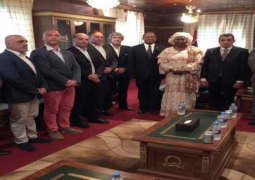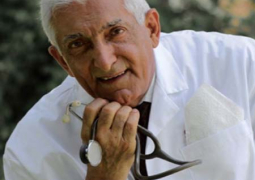To this end, we call on the Governments of the world to encourage women everywhere to take a more active part in national and international affairs, and on women who are conscious of their opportunities to come forward and share in the work of peace and reconstruction as they did in war and resistance." Eleanor Roosevelt, in his open letter addressed to 'the women of the world' during the inaugural meeting of the UN General Assembly in London, February 1946 where he was a delegate of the United States of America.
Historical Background of Women's Charter and CSW
Prior to the above Roosevelt's noteworthy remark, the UN Charter on the Advancement of Women was signed in 1945 in San Francisco, interestingly by mainly men representatives (only 4 women out of the 160 signatories). Few days after the signing of the Charter, a sub-commission was established under the Commission on Human Rights to look into the status of women. Upon start of work, the first Chairperson of the sub Commission, Bodil Bosterup, a Danish re-echoed the necessity as been claimed by many women and Non-Governmental Organisations for the setting up of a separate body specially dedicated to women's issues. The Chairperson requested the Economic and Social Council (ECOSOC) in May 1946 for a change to full commission status. In her efforts to pursue her case further, Bosterup said "Women 's problems have now for the first time in history to be studied internationally as such and to be given the social importance they ought to have. And it would be, in the opinion of this Sub-Commission of experts in this field, a tragedy to spoil this unique opportunity by confusing the wish and the facts. Some situations can be changed by laws, education, and public opinion, and the time seems to have come for happy changes in conditions of women all over the world"
The efforts of these women and their NGO partners was actualized on 21st June 1946, when the Sub-Commission was formally transformed into a full-fledge body called Commission on the Status of Women (CSW). The commission was aimed at ensuring women's equality and to promote women's rights. Its mandate was to "prepare recommendations and reports to the Economic and Social Council on promoting women's rights in political, economic, civil, social and educational fields" and to make recommendations "on urgent problems requiring immediate attention in the field of women's rights." Shortly thereafter, the Section on the Status of Women of the United Nations Secretariat - which later became the Division for the Advancement of Women in 1978 - was established in the Human Right's Division of the United Nations to provide secretarial functions.
This proceeded the first meeting of the CSW in February 1947 in Lake Success, New York. It's interesting to note that during this meeting all the 15 government
1representatives were women and this gave the Commission the unique character of gathering a majority of women delegates ever.
February 1947 session, the Commission also forged a close relationship with nongovernmental organizations. Several international women's organizations addressed the Commission at the first session, and from then on, non-governmental organizations in consultative status with ECOSOC were invited to participate as observers. In the 1950's, the average number of NGOs attending the Commission's sessions rose to 30 and then 50. The openness of the Commission to civil society has continued up to the present time, and has allowed many NGOs' contributions to be incorporated in its agreed conclusions and UN resolutions.
During the period 1946-1962, the Commission focused its attention on promoting women's rights and equality by setting standards and formulating international conventions aiming at changing discriminatory legislation and fostering global awareness of women's issues. However, the codification of the legal rights of women needed to be supported by data and analysis of the extent to which discrimination against women existed, not only in law but also in practice. The Commission, thus embarked on what could be referred to as a global research and polling of efforts to assess the status of women worldwide. Several questionnaires and studies were launched in order to collect information on the legal status of women, their access to education, work opportunities and civil rights.
Member States provided the Commission with statistics, while non-governmental organizations (NGOs) and other UN agencies provided additional information, especially of a more qualitative nature. These fact- finding efforts produced a detailed, country-by country picture of the political and legal status of women, which over time became the basis for drafting human right instruments.
The Beginning of Greater Awareness on Women's Issues
The 1960s and 1 970s were a time of profound change in the United Nations, whose membership had begun to expand dramatically with the emergence of newly independent nations. The organization began widening its focus to include the concerns of developing nations.
The 1 960s and early 1 970s also saw the emergence in many parts of the world of a greater awareness of discrimination against women, and a rise in the number of organizations committed in combating those discrimination.
The mushrooming international women's movement influenced the approaches to women and development within the UN, thereby compelling the Commission to increase its focused on the role of women in development, both as beneficiaries and as agents of change.
As evidence began to accumulate in the 1960s that women were disproportionately affected by poverty, the work of the Commission centered on women's needs in community and rural development, agricultural work, among others.
The Commission encouraged the UN to expand its technical assistance to further the advancement of women, especially in developing countries. This call was further influenced by a 1970
2representatives were women and this gave the Commission the unique character of gathering a majority of women delegates ever.
February 1947 session, the Commission also forged a close relationship with nongovernmental organizations. Several international women's organizations addressed the Commission at the first session, and from then on, non-governmental organizations in consultative status with ECOSOC were invited to participate as observers. In the 1950's, the average number of NGOs attending the Commission's sessions rose to 30 and then 50. The openness of the Commission to civil society has continued up to the present time, and has allowed many NGOs' contributions to be incorporated in its agreed conclusions and UN resolutions.
During the period 1946-1962, the Commission focused its attention on promoting women's rights and equality by setting standards and formulating international conventions aiming at changing discriminatory legislation and fostering global awareness of women's issues. However, the codification of the legal rights of women needed to be supported by data and analysis of the extent to which discrimination against women existed, not only in law but also in practice. The Commission, thus embarked on what could be referred to as a global research and polling of efforts to assess the status of women worldwide. Several questionnaires and studies were launched in order to collect information on the legal status of women, their access to education, work opportunities and civil rights.
Member States provided the Commission with statistics, while non-governmental organizations (NGOs) and other UN agencies provided additional information, especially of a more qualitative nature. These fact- finding efforts produced a detailed, country-by country picture of the political and legal status of women, which over time became the basis for drafting human right instruments.
Read Other Articles In Article (Archive)
Human Rights Activist has case to answer - Magistrate Abeke
Jul 5, 2010, 11:17 AM
Politics should not divide us
Sep 2, 2011, 1:01 PM



